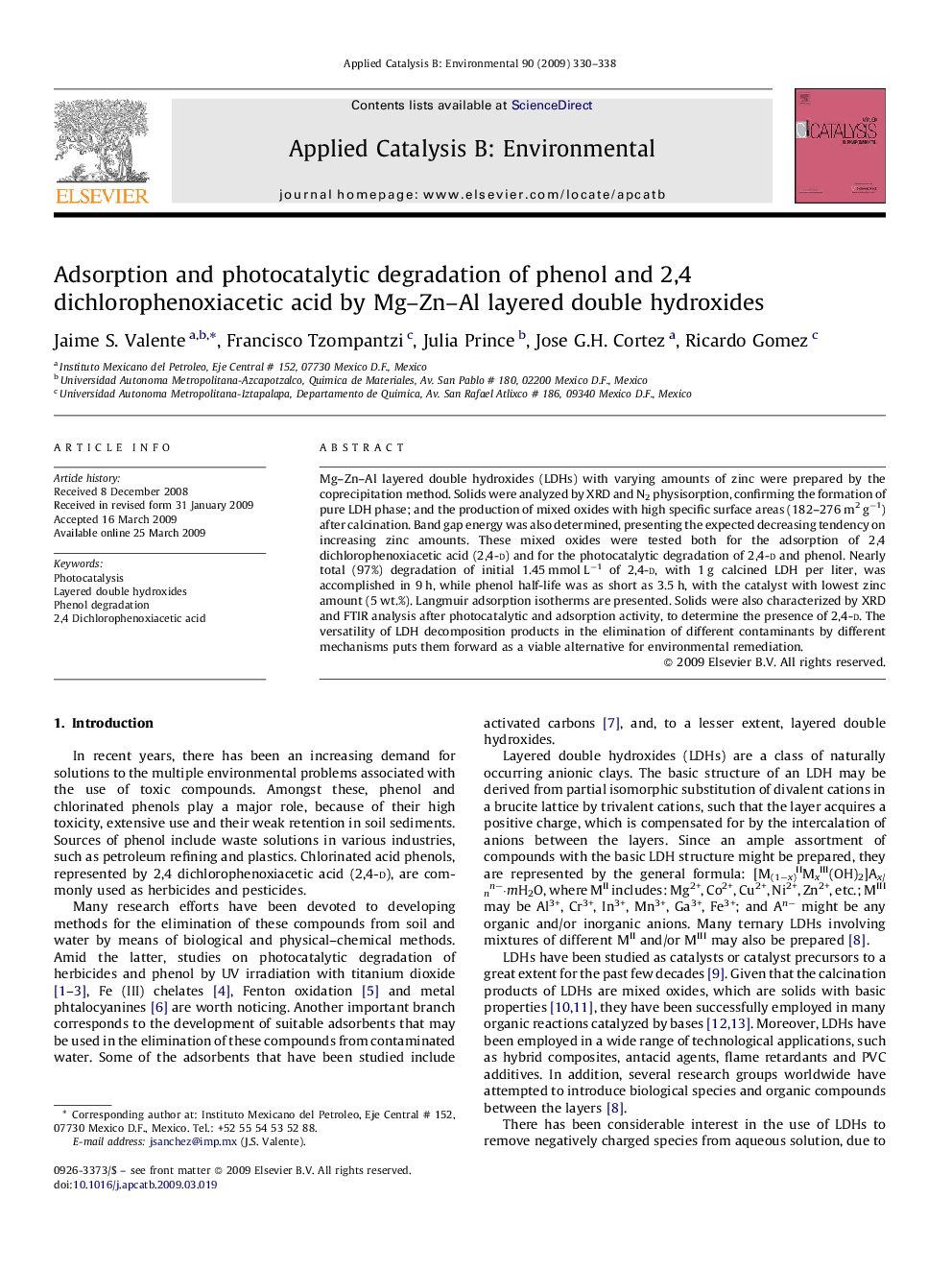| Article ID | Journal | Published Year | Pages | File Type |
|---|---|---|---|---|
| 47638 | Applied Catalysis B: Environmental | 2009 | 9 Pages |
Mg–Zn–Al layered double hydroxides (LDHs) with varying amounts of zinc were prepared by the coprecipitation method. Solids were analyzed by XRD and N2 physisorption, confirming the formation of pure LDH phase; and the production of mixed oxides with high specific surface areas (182–276 m2 g−1) after calcination. Band gap energy was also determined, presenting the expected decreasing tendency on increasing zinc amounts. These mixed oxides were tested both for the adsorption of 2,4 dichlorophenoxiacetic acid (2,4-d) and for the photocatalytic degradation of 2,4-d and phenol. Nearly total (97%) degradation of initial 1.45 mmol L−1 of 2,4-d, with 1 g calcined LDH per liter, was accomplished in 9 h, while phenol half-life was as short as 3.5 h, with the catalyst with lowest zinc amount (5 wt.%). Langmuir adsorption isotherms are presented. Solids were also characterized by XRD and FTIR analysis after photocatalytic and adsorption activity, to determine the presence of 2,4-d. The versatility of LDH decomposition products in the elimination of different contaminants by different mechanisms puts them forward as a viable alternative for environmental remediation.
